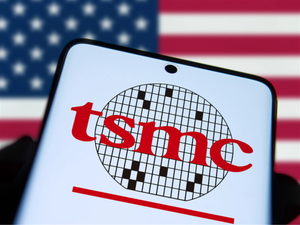Researchers at Yale School of Medicine, funded by Breakthrough T1D, are evaluating GTT@home, a new finger-prick, at-home glucose tolerance test, to monitor early-stage type 1 diabetes (T1D) in individuals with T1D autoantibodies. Developed by Digostics, the test offers a simpler, less invasive alternative to clinic-based OGTTs. The study aims to assess its accuracy, usability, and acceptance, potentially paving the way for wider use in early T1D detection and monitoring.
Researchers have initiated an evaluation of a new at-home test to diagnose and monitor early stages of type 1 diabetes (T1D), based on blood glucose levels. The test would be used in individuals who have already tested positive for T1D autoantibodies to identify where they may be in their early-stage T1D progression. The trial, which is funded by Breakthrough T1D (formerly JDRF) the leading global T1D research and advocacy organization, will assess the accuracy, reproducibility, and acceptability of the GTT@home Oral Glucose Tolerance Test (OGTT) compared to in-clinic OGTTs. The results of the trial will inform future regulatory submissions for GTT@home use in T1D, which already has regulatory approval in the UK, Europe and other regions for other types of diabetes.
GTT@home is an OGTT developed by British diabetes home-testing company Digostics that uses finger-prick blood samples to measure how well the body processes glucose. The test, being studied at Yale School of Medicine in New Haven, Conn., has been shown to be as accurate as lab-based OGTTs when used in adults with glucose intolerance, type 2 diabetes, or in pregnant individuals to diagnosis gestational diabetes. The GTT@home test has successfully been implemented in several UK NHS Trusts to screen for gestational diabetes in pregnancy.
Dr. Jennifer Sherr, Professor of Pediatric Endocrinology and the Medical Director of Pediatric Diabetes at Yale School of Medicine and co-lead principal investigator of the trial, said: “As the presence of diabetes autoantibodies foretells an eventual diagnosis of T1D, it is critical to conduct an OGTT to stage the disease, which helps predict the risk of progression over time. Yet, in the current paradigm this requires coming to a clinical center or laboratory and getting venous blood draws. Despite knowing there is an increased risk of diabetes many individuals struggle to undergo an OGTT for staging, or repeat the test to permit ongoing monitoring. An at-home OGTT would alleviate this barrier. The ability to have those at risk use a product that is simple, requires fingerpricks instead of venous draws, and can be done within a person’s own home at a date and time that is convenient for them would be a fantastic step forward for both patients and providers.”
T1D can be diagnosed at any age, and it is the most common childhood autoimmune disease, affecting around one in 350 children. In T1D the body’s immune system attacks and destroys the insulin-producing cells in the pancreas, resulting in elevated blood glucose levels. It affects every aspect of health and well-being and results in lifelong insulin dependence and an increased risk of major health problems such as heart disease, blindness, and kidney failure. In 40% or more of children the diagnosis of T1D is not made until the child has become severely unwell and presents with metabolic decompensation, which is known as diabetic ketoacidosis (DKA), a life-threatening diabetes complication.
Dr. Raquel Lopez-Diez, Scientist at Breakthrough T1D commented, “Breakthrough T1D is excited to fund this important work with Yale University School of Medicine to explore an at-home alternative to OGTT for glycemic monitoring in the early stages of type 1 diabetes. Traditional in-clinic OGTTs are time-consuming, can be challenging to navigate for younger individuals, and require significant clinic resources. As new therapies emerge that can delay and, hopefully, one day prevent the progression of type 1 diabetes, it is critical to have the tools to accurately and reliably monitor and diagnose the early stages of the disease. A validated at-home testing approach would represent a major breakthrough. We look forward to seeing the results of this important study.”
T1D develops in stages over time, and early stages can be detected through a simple blood test. In stage 1 the body develops islet autoantibodies but the blood glucose levels are still normal. In stage 2, islet autoantibodies are present and individuals experience abnormal blood glucose or dysglycemia, and by stage 3 an individual has the clinical diagnosis of T1D and symptoms may begin to appear due to significant loss of insulin-producing cells.
The OGTT is the gold-standard test recommended for defining the stage of T1D a person is experiencing, and it is the most sensitive test for monitoring T1D stages 1 and 2. Hospital-based OGTTs are often not well tolerated because they require placement of an intravenous line inserted into the vein or multiple blood draws, as several blood samples taken over 2-hours in a healthcare setting.
Study lead Dr. Alfonso Galderisi, Associate Professor of Pediatrics at Yale School of Medicine, confirmed that the study will recruit 60 patients aged eight and over. “To understand the ease of conducting the test, participants will complete an unsupervised GTT@home test. Five to seven days later, participants will come to our research unit and we will conduct the standard of care OGTT alongside a supervised GTT@home, with the results of the two tests compared to assess accuracy. We will also be interviewing participants to assess their perception of the two methods used to conduct OGTTs.”
Glucose tolerance tests are performed in the morning after an overnight fast. The GTT@home test kit contains the test device, finger prickers for blood sample collection, a preformulated glucose drink, and detailed instructions. The process begins with an initial finger prick blood sample, followed by the consumption of the glucose drink. Two hours later, a second blood sample is taken. With standard clinic-based OGTTs, individuals need to travel to a clinic early in the morning and then undergo the two blood draws two hours apart and have an IV inserted.
The GTT@home device analyses blood samples shortly after completion of the test and shares results in a timely manner directly with the study teams or clinician. Expedited analysis of samples eliminates the risk of sample degradation that can affect hospital-based OGTTs when samples are not sent to the lab immediately, improving diagnostic reliability.
"The support from Breakthrough T1D and the team at Yale School of Medicine underscores once again the huge potential for our at-home OGTT for use in T1D," said James Jackson, CEO and Founder of Digostics. "We are working closely with the Yale study team to support this trial.”
View source version on businesswire.com: https://www.businesswire.com/news/home/20250717940134/en/
Contacts
Media Contact
Sarah Roberts
Vane Percy & Roberts (sarah@vanepercy.com)







